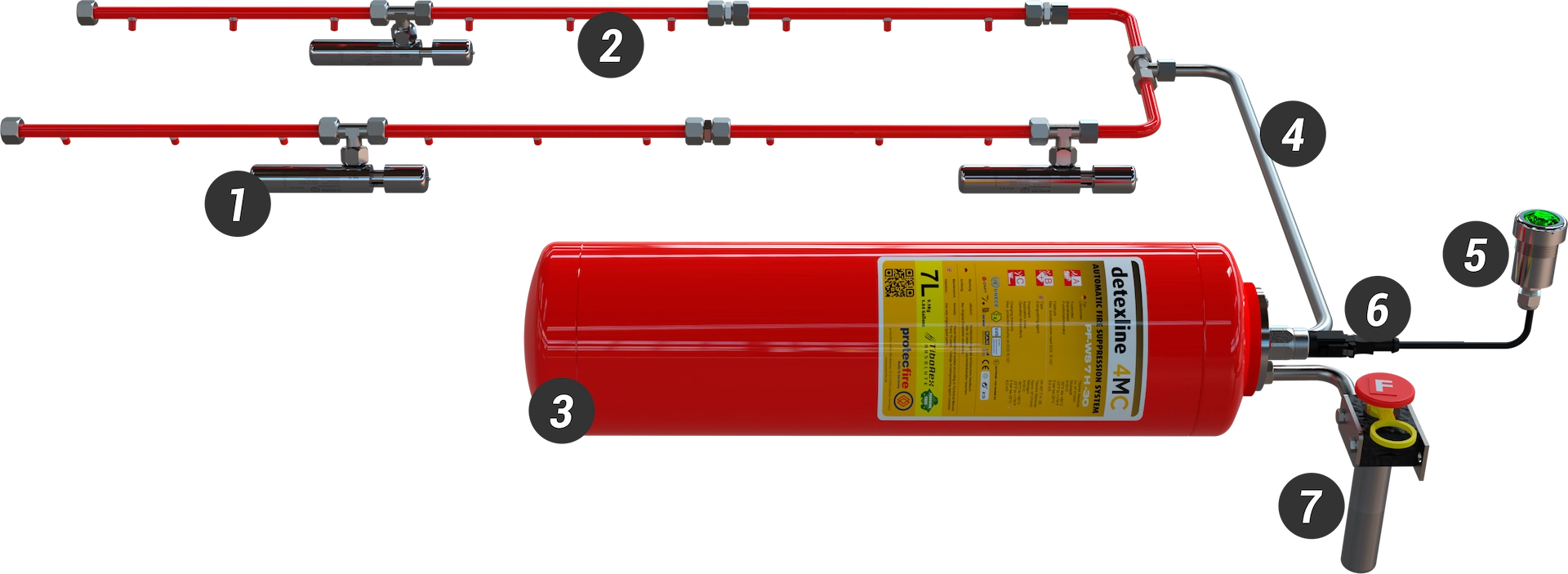Top Fire Prevention System for Hydraulic Systems | What You Need to Know?

Fire safety is a critical concern in any industrial or manufacturing setting, and hydraulic systems are no exception. Hydraulic systems operate under high pressure and often involve flammable fluids, making them vulnerable to fires if not properly managed. To mitigate these risks, companies must implement robust fire prevention system. This article explores the best fire prevention system for hydraulic systems and provides insight into how these systems work to prevent catastrophic incidents.
What Makes Hydraulic Systems Fire-Prone?
Hydraulic systems typically involve fluids under extreme pressure to power machines or control various processes. These fluids, while essential for operational efficiency, can become dangerous when exposed to high temperatures or sparks. Many hydraulic fluids are flammable, especially mineral-based oils, which can ignite if they leak onto a hot surface or come into contact with an electrical spark.
Additionally, hydraulic systems are often located near machinery or electrical components that generate heat, increasing the likelihood of fire if a system malfunctions. Therefore, having a robust fire prevention system is critical to protecting workers, assets, and infrastructure.
Automatic Fire Suppression Systems
Automatic fire suppression systems are among the most advanced fire prevention tools available for hydraulic systems. These systems are designed to detect fires at an early stage and automatically activate suppression mechanisms to contain and extinguish the fire before it spreads. There are various types of automatic fire suppression systems:
- Foam-based systems: These systems use a foam solution to smother flames by cutting off the oxygen supply and cooling the area. Foam is particularly effective in hydraulic systems because it can cover large areas quickly and is highly effective on oil-based fires.
- Gas suppression systems: These systems release gases such as carbon dioxide or inert gases to suppress fires by reducing oxygen levels in the affected area. This is a good choice for hydraulic systems in enclosed spaces where water or foam might cause additional damage to equipment.
Flame Detection Systems
Flame detection systems are a proactive fire prevention solution for hydraulic systems. These systems use sensors to detect the presence of flames or high temperatures and send an alert before a fire escalates. Flame detection systems can be integrated with automatic suppression systems for a more comprehensive approach to fire prevention. By monitoring critical areas for fire hazards, flame detection systems help minimize response time and can even trigger automated systems to extinguish a fire before it becomes unmanageable.
Routine Maintenance and Inspections
Finally, one of the most overlooked yet essential fire prevention strategies is regular maintenance and inspections of hydraulic systems. Routine maintenance and inspections help identify potential fire hazards before they become significant problems. This includes checking for leaks, ensuring hoses are in good condition, and monitoring temperature levels in areas prone to overheating. Regular inspections should also include testing fire suppression and flame detection systems to ensure they are functioning correctly.
Conclusion
Preventing fires in hydraulic systems is a multifaceted challenge that requires a combination of high-quality materials, advanced technology, and consistent maintenance practices. By utilizing automatic fire suppression systems can significantly reduce the risk of fire-related incidents. Ultimately, a proactive approach to fire prevention can protect both personnel and assets, ensuring that operations run smoothly and safely.

